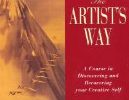Memorising is the skill necessary to commit information to memory. Human memory is a complex process and consists of sensory memory, short-term memory (STM) also known as working memory, and long-term memory (LTM). The process by which memories are made involves the three areas of Encoding, Storage and Retrieval. Encoding is the way that incoming information is first processed, storage is where information is maintained, and retrieval is the process of accessing stored information. Based on these three areas, the Information Processing Model was proposed by Atkinson and Shiffrin (1968) to explain how the processes are linked.
 Adapted from Atkinson and Shiffrin.
Adapted from Atkinson and Shiffrin.The sensory memory is the shortest form of memory, and holds information for only a split second. We are constantly bombarded by information from the five senses, but most of what we sense from the stimuli in our environment is ignored or forgotten about which happens without conscious thought. If we remembered everything that we sensed, our memory would become very cluttered, and therefore only a small amount of the information that we are paying attention to is transferred to the STM.
The capacity of the STM was notably cited by George Miller in 1956, who proposed that the Short-Term memory had a limited capacity and could hold 7 items, plus or minus two, such as seven numbers or seven words. These memories are temporary and last up to approximately thirty seconds, where they are either forgotten or passed to the Long-Term Memory Store. The transfer of information from the STM to the LTM can be easily disrupted, and therefore it is important to focus on the information and well use rehearsal, which simply means repeating information.
The Long-Term memory has an unlimited capacity, is not easily disrupted and is relatively permanent. When we recall information from our LTM, there are some memories that are remembered better than others. This is due to the way that they were encoded. Information can be encoded in 4 different ways: acoustic – sounds and auditory, visual – visual sensory and images, semantic – specific meanings, and tactile – how something feels through touch. When information is encoded in more than one way, encoding is likely to be more effective and memories are likely to be recalled with more ease. New information is also remembered better if it can be associated with previous knowledge/memories, which is known as Assimilation or Association. Memories can also be stored as Schemas, which are mental concepts that help to inform us about what to expect when we encounter similar situations. These can be Role Schemas which help us to understand social situations, or Behaviour Schemas which help us to perform actions.
memorising information
When we are trying to learn information, there are many different techniques that have been proposed. Different techniques work for different people, so you need to find the one that will work for you. Alongside this, it is important to try to keep your brain active so that you can improve your memory and mental functioning. Mental exercise such as solving crosswords or puzzles, or learning new skills that challenge your brain can create new neural connections and maintain individual brain cells.
Chunking
This is a technique that aims to assist the STM by putting larger amounts of information into small chunks that can be remembered more easily. This means that we can remember 7 chunks with more information than just one single number or word. Chunking is particularly useful when remembering phone numbers, where we could put numbers into groups of 3 or 4, instead of remembering the individual digits. Chunking can also be used to remember lists, such as putting words with similar meanings together, with similar characteristics, or with the same starting letter.
Association
Association is a way of memorising information so that it has more meaning, or is linked to information that we are familiar with. Numbers could be remembered as dates of birth or the age of a friend, and unfamiliar words can be remembered as words that they sound like.
Acronyms
These are invented combinations of letters which act as cues for the words you need to remember, especially if the words need to be remembered in a specific order. For Maths pupils, the acronym BODMAS (Brackets, Orders, Division,Multiplication, Addition,Subtraction) is used to remember the order in which to solve mathematical problems.
Mnemonics/Acrostics
Mnemonics are similar to acronyms, but instead of memorising an acronym, a sentence can be made from the first letters of the words that you are memorising. Examples include, “Richard Of York Gave Battle In Vain” which is used to remember the colours of the rainbow (Red,Orange, Yellow, Green, Blue, Indigo Violet) and “My Very Easy Method Just Speeds Up Naming Planets” refers to the order of the planets.
Rhymes
Rhymes are a good way of memorising larger amounts of information, because our brains can encode acoustic information more easily, as well as rhymes usually being presented in a similar singsong pattern of sound which we are used to, and having a predictability about them.
Rehearsal
Rehearsing information is the key to transferring information from the STM to the LTM. Rehearsing information can take different forms. This can be oral, written, or both. Writing out information by hand that you are trying to memorise stimulates a different area in the brain that allows easier memory recall. You can also read aloud information and record it on a voice recorder, so that when you play it back you involve hearing, and the use of auditory encoding.
Stories
When memorising words that are not obviously linked in any way, you can try to create a story that involves all the words you are trying to remember. Each word needs to be distinctive in the story, and needs to have a link to the next word. The more fun and imaginative the story the better. Have a go at making a story from the following list of supermarket items: Eggs, light bulb, flowers, dog food, soup, vegetables.





Leave a Comment